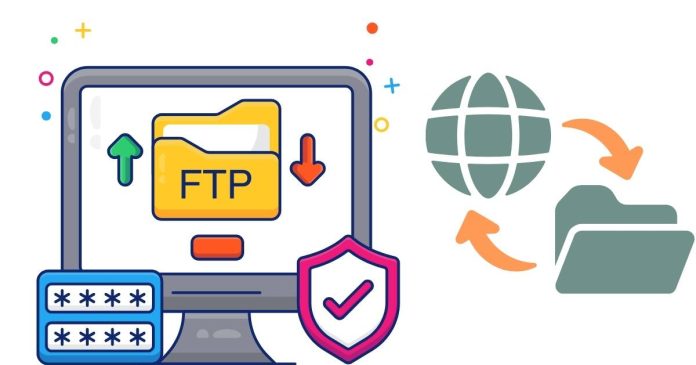File Transfer Protocol (FTP) is a standard network protocol used to transfer files between a client and a server over the internet or a local network. Developed in the early days of computing, FTP remains a widely used method for file sharing and management in various industries, from web development to enterprise IT environments.
What is FTP?
FTP enables users to upload, download, and manage files on remote servers. It operates on a client-server model, where:
- The client is a device or software that initiates requests for file transfers.
- The server responds to these requests, enabling access to files stored on it.
FTP can handle various file types and sizes, making it suitable for diverse applications.
How FTP Works
- Connection Establishment:
- FTP uses two channels for communication:
- Command Channel: Handles commands and responses between client and server.
- Data Channel: Transfers the actual files.
- FTP operates primarily on ports 21 (for commands) and 20 (for data transfer).
- FTP uses two channels for communication:
- Authentication:
- Users typically log in with a username and password.
- Anonymous FTP allows users to connect without credentials, often for public file access.
- File Transfer:
- After authentication, users can upload files to the server, download files, or perform actions like renaming and deleting files.
Types of FTP Modes
- Active Mode:
- The client opens a random port for data transfer and informs the server. The server initiates the connection to this port.
- This mode can encounter issues with firewalls blocking incoming connections.
- Passive Mode:
- The server opens a random port and shares it with the client. The client then connects to the specified port.
- This mode is firewall-friendly and commonly used today.
Secure Alternatives to FTP
Traditional FTP is unencrypted, making data vulnerable during transfer. Secure versions include:
- FTPS (FTP Secure):
- Adds encryption using SSL/TLS to secure the connection and protect data.
- SFTP (SSH File Transfer Protocol):
- A separate protocol based on SSH, providing robust encryption and security.
- FTPES (Explicit FTP over TLS):
- Combines FTP with explicit TLS encryption, securing data transfer.
Common Uses of FTP
- Web Development:
- Uploading and managing website files on hosting servers.
- File Sharing:
- Distributing large files like software updates or media files.
- Backup and Archiving:
- Transferring backups to remote servers for safekeeping.
- Enterprise File Management:
- Facilitating file sharing between departments or teams.
Advantages of FTP
- Efficient File Transfer: Handles large files and batch transfers effectively.
- Wide Compatibility: Supported by most operating systems and platforms.
- Flexibility: Allows user authentication and anonymous access.
Limitations of FTP
- Lack of Encryption:
- Standard FTP transfers data in plaintext, exposing it to potential interception. Secure alternatives are preferred in modern environments.
- Firewall Issues:
- Active mode can face challenges with firewalls and NAT configurations.
- Complex Configuration:
- Setting up FTP servers may require technical expertise.
- Outdated for Sensitive Data:
- Insecure by modern standards, making it unsuitable for transferring sensitive or confidential files.
FTP Clients and Servers
Popular FTP Clients:
- FileZilla: A free, open-source FTP client compatible with multiple platforms.
- Cyberduck: Known for its user-friendly interface and support for cloud storage.
- WinSCP: A Windows-based client with SFTP and SCP support.
Popular FTP Servers:
- vsftpd: A secure and fast FTP server for Linux.
- ProFTPD: A configurable and versatile FTP server.
- Microsoft IIS FTP Server: Built into Windows Server for enterprise use.
FTP remains a foundational protocol for file transfers despite being overshadowed by modern, more secure alternatives. By understanding its workings, modes, and secure options like SFTP or FTPS, users can leverage FTP effectively for a variety of tasks, from website management to enterprise file sharing. For environments where security is critical, adopting secure protocols is essential to ensure data protection during transfers.


